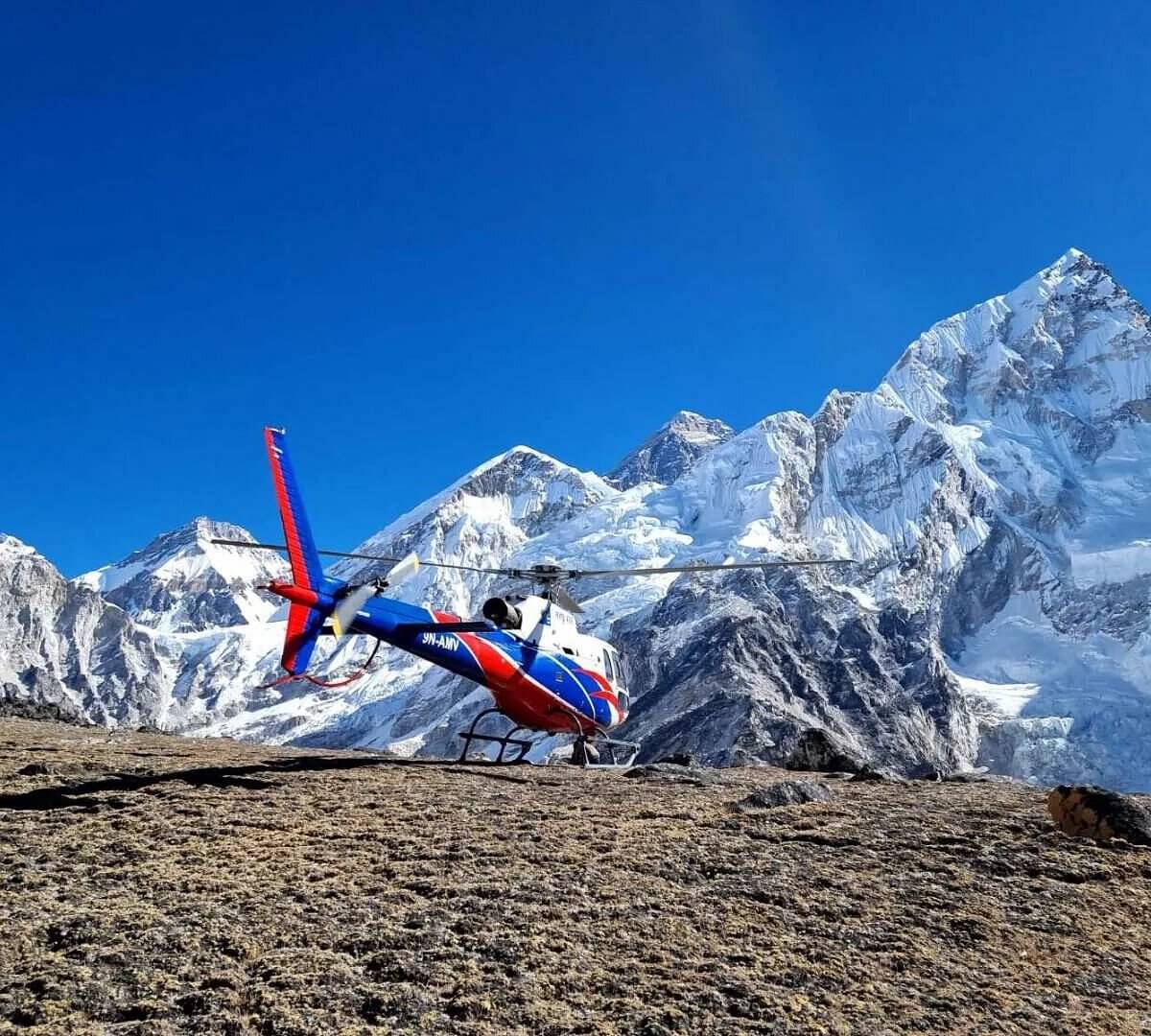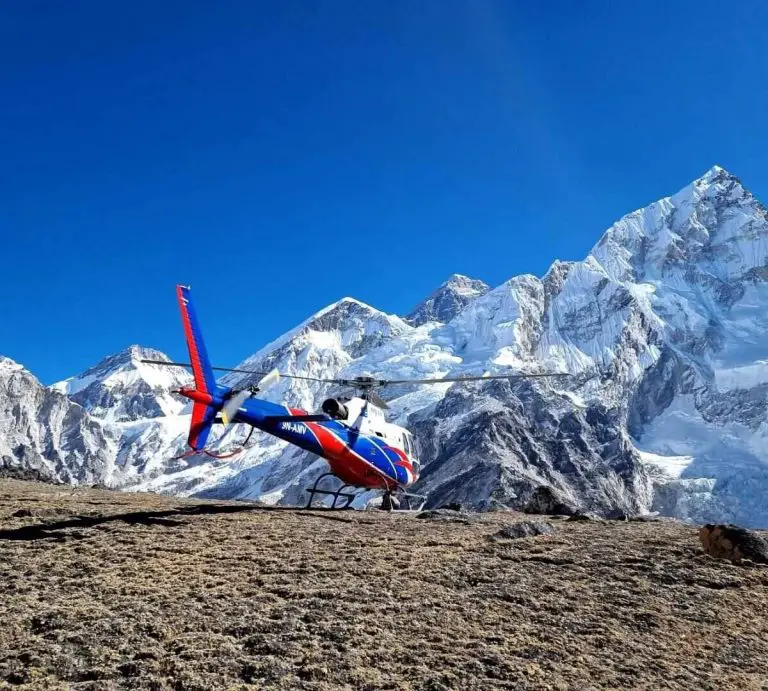Nepal is renowned throughout the world as a Himalayan country. Of the 1,310 peaks higher than 6000 meters, 238 are already accessible for climbing. Similarly, eight of the fourteen peaks that rise to an altitude of 8000 meters or higher, including Mount Everest, are located in Nepal. Kanchenjunga, Lhotse, Makalu, Cho-Oyu, Dhaulagiri, Manaslu, and Annapurna are the other seven mountains. One of the most exciting and rewarding activities that send a rush of adrenaline through your veins is mountain climbing. Climbers and mountaineers have access to all of these mountains. These mountains have already been scaled by some, who have proven their worth.
Under a blanket of blue sky, the Himalayas are standing tall and welcoming daring climbers, travelers, and trekkers. One of Nepal's well-known draws for tourists is its geographic variety, cultural diversity, unspoiled nature, hidden lands, sapphire landscape, and brilliant mountains. Out of a total of 14, Nepal has 8 peaks, making for an excellent mountaineering experience. The world's tallest peak, Mount Everest, is renowned for its perfect mountaineering conditions, whereas Mount Annapurna is renowned for its perilous yet thrilling ascent.
Mt. Everest (8,849m) The Highest Mountain Peak in the world
The highest mountain in the world is 8,848 meters (29,029 feet) above the mean sea level. On the border between China (Tibet) and Nepal (Sagarmatha Zone), it is situated in the Himalayas. One of the most well-liked trekking areas in Nepal. The mystique of the trek to Everest Base Camp comes from its towering giant, constantly panoramic peaks and the daring exploits of legendary mountaineers. The Everest, located in the Solu and Khumbu diversified district, is justly famous for housing Mount Everest, the highest mountain in the world (8850m), as well as for its exotic Sherpa villages and monasteries, flora, and fauna. The primary objective of many Everest treks is to ascend to Everest Base Camp, which is located at an altitude of about 5430m.
Related packages
Kanchenjunga (8,586m) Third Highest Mountain Peak
With an elevation of 8,598 meters, Kanchenjunga is the third-tallest mountain in the entire world. The breathtaking view of the Jannu Himalayas range from the Mirgin La is the trip to Kanchenjunga's reward. British Team made the first ascent of Kanchenjunga, also referred to as the Treasure of Snow, in 1956 AD. Eastern Nepal has a remote trekking region called Kanchenjunga. You can learn about animals like the Snow Leopard, Musk Deer, Blue Sheep, and many others. Up until 1852, Kanchenjunga was thought to be the world's highest peak. Because of incorrect calculation, it was as it was. The Great Trigonometrical Survey of India's investigation revealed that Kanchenjunga was the third-tallest peak.
Lhotse (8,516m) Fourth Highest Mountain Peak
The fourth-highest mountain in the world is Lhotse (8516 m). Its long east-west crest is situated directly south of Mount Everest, and the South Col, a vertical ridge that never descends below 8,000 meters, connects the summits of the two mountains. Occasionally, Lhotse is mistakenly considered to be the southernmost peak of the Everest massif. Lhotse wasn't given any serious consideration until Everest had finally been scaled. Two Swiss climbers, Fritz Luchsinger, and Ernest Reiss, made the first ascent of Lhotse in 1956. The main summit is accompanied by two subsidiary summits. Lhotse Shar, a high peak on the Mountain's East Ridge, and Nuptse, a tall peak on the West Ridge.
Makalu (8,463m) Fifth Highest Mountain Peak
With an elevation of 8,485 meters, Makalu is the fifth-highest mountain on Earth. It is situated in the Mahalangur Himalaya on the border between Nepal and Tibet (an autonomous region of China). 14 miles east of Everest, Mount Makalu, is a magnificent peak that only caught the attention of mountaineers after Mt. Everest's ascent was successful. The peak's four sharp ridges and steep pitches make it one of the hardest and most difficult peaks in the world. Lionel Terray and Jean Couzy of the French expedition became the first climbers to reach the summit of Makalu in 1955, while an American team's initial attempt in 1954 was unsuccessful due to a severe storm. The alternative option for intrepid trekkers and mountain lovers is Makalu Base Camp Trekking, which offers a variety of rewards like off-the-beaten-path trails, rhododendron forests, difficult routes, rare wildlife, traditional culture, etc.
Cho Oyu (8,188m) Sixth Highest Mountain Peak
The sixth-highest mountain in the world, Cho Oyu (8,201 meters), is situated not far from Everest and Lhotse in the Khumbu region of eastern Nepal, close to the Tibetan border. The Khumbu sub-segment of the Mahalangur Himalaya contains Everest. The summit is considered the best peak for climbing above 8,000 meters and is the second-most-climbed 8,000-meter peak after Everest. Many mountaineers want to climb Cho Oyu, also known as the “Turquoise Goddess” in Tibet. The first successful attempt was made in 1954 by Hebert Tichy, Pasang Dawa Lama, and Joseph Jochler. This peak was first attempted in 1952 as part of a British expedition to climb Mt. Everest.
There are several ways to reach Cho Oyu Top, with Nang La Pass being the most well-liked. Because of its simplicity of access, the peak is also referred to among mountaineers and trekkers as the “Trekking top”. The towering sand peaks of Everest cover the highest nearby mountains. Cho Oyu is becoming more and more familiar to climbers ascent Everest from the north. In the 15th century, Nampara, a 19,000-foot glacier pass west of Cho Oyu, served as the main trade route between Khumbusherpa and Tibet. Because of its proximity to Nangpa La, Cho Oyu has a reputation among climbers as being the easiest 8,000-meter summit. This peak, which is the third of its kind, was scaled for the first time in the fall by two Austrians.
Dhaulagiri (8,167m) Seventh Highest Mountain Peak
The seventh-highest mountain in the world and the sixth-highest peak in Nepal is Dhaulagiri I. From the Kali Gandaki River to Bheri, it is a part of the Dhaulagiri massif. The name of the mountain is derived from the Sanskrit words “Dhwala,” which means “dazzling, white, and majestic,” and “Giri,” which means “peak.” The Gandaki River's highest point can also be found on Dhaulagiri I. The Kali Gandaki Gorge, the deepest gorge in the world, is formed between these two ranges by Annapurna I, which is located 35 kilometers east of Dhaulagiri I. Due to the low number of trekkers who frequent the area, Mount Dhaulagiri offers an off-the-beaten-path trekking experience.
The regions that are in the peak's rain shadow, like Mustang and Dolpo, are also a result of Dhaulagiri. Due to the Dhaulagiri massif's obstruction of rain clouds, Mustang experiences dry, arid conditions with corroded hills and desert-like terrain. Mount Dhaulagiri is the only mountain that is entirely within Nepal, in contrast to many other mountains that border other nations.
Manaslu (8,163m) Eight Highest Mountain Peak
It is located in central Nepal (Gorkha district), within the Mansiri Himal range, and is also referred to as Kuang. The Japanese expedition team of Toshio Imanishi, Maki Yuko, and Gyaltsen Norbu Sherpa made the first successful ascent in 1956. The Sanskrit word Manasa, which means mind, soul, and intellect, gave the peak its name. Locals refer to this peak as the mountain of spirit or soul as result. Manaslu is also known as the Killer Mountain because more than 60 climbers perished while attempting to reach its summit. Apart from the Manaslu expedition, trekking is Manaslu's other major draw. From September to November and March to May, people frequently go on the Manaslu Circuit Trek and Manaslu Short Circuit Trek. The Manaslu Conservation Area, immaculate hiking trails, breathtaking scenery, and traditional Tibetan villages are additional draws of the area.
Related packages
Annapurna (8,091m) Tenth Highest Peak
The tenth highest mountain in the world is the enormous Himalayan massif known as Annapurna (8,091). It was the first mountain over 8,000 meters to be successfully climbed in 1950. The Kali Gandaki River carved a large gorge through the Himalayas to the east of this location. The glaciers on the mountain's western and northwestern slopes flow into this gorge. The Sanskrit name is Annapurna means “goddess of harvests” or “the provider” more simply. Five of Annapurna's many high peaks are identified by names that include the name Annapurna. The two tallest of these—Annapurna I and II—stand at the western and eastern ends of the massif-like bookends. Numerous trekking routes provide breathtaking views of the Annapurna Range. The Annapurna Base Camp Trek and the Annapurna Circuit Trek are two excellent ways to see the massifs. These are Nepal's eight tallest peaks. Many other smaller peaks in Nepal are home to thrilling Peak Climbing Adventures.
Related packages














